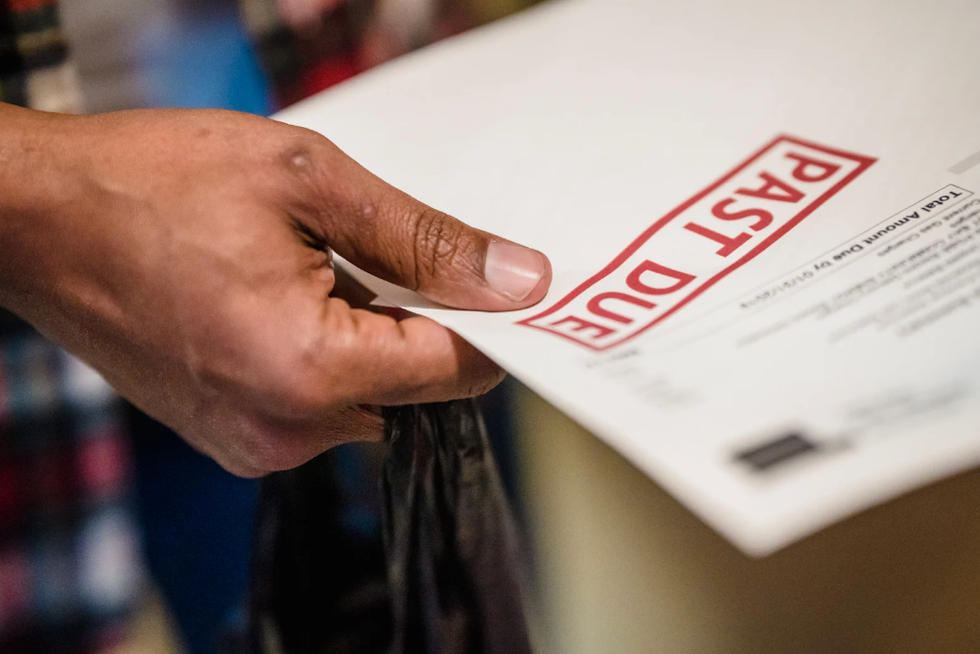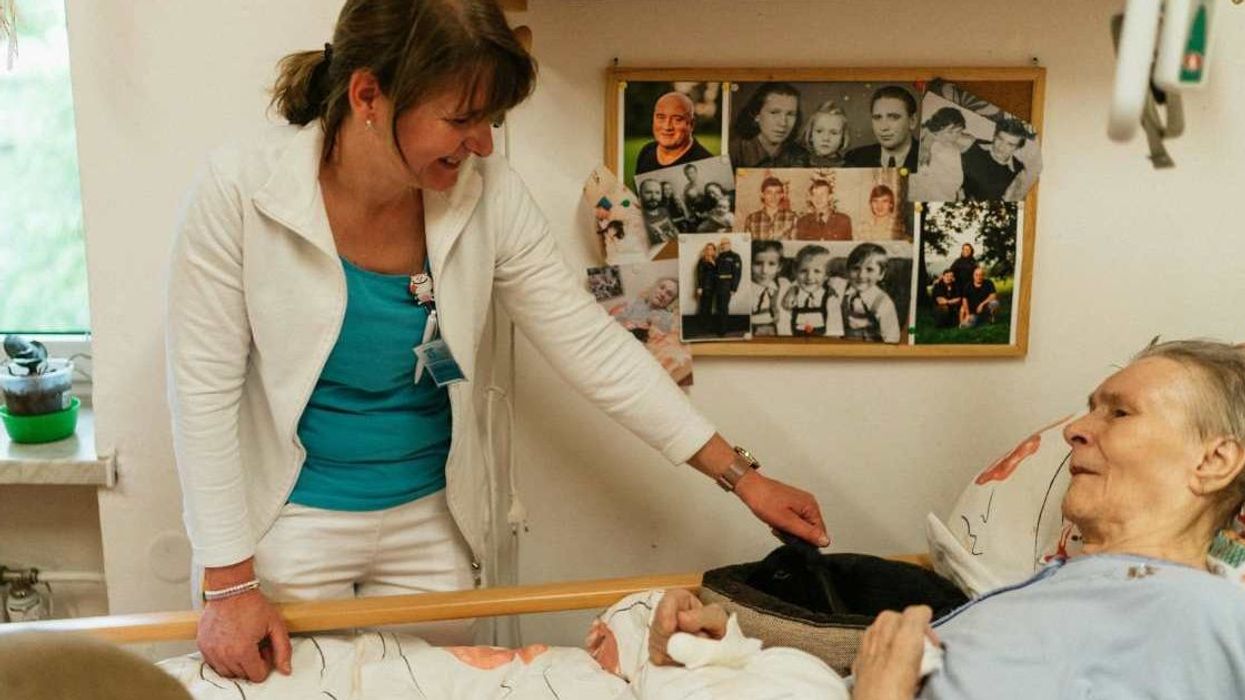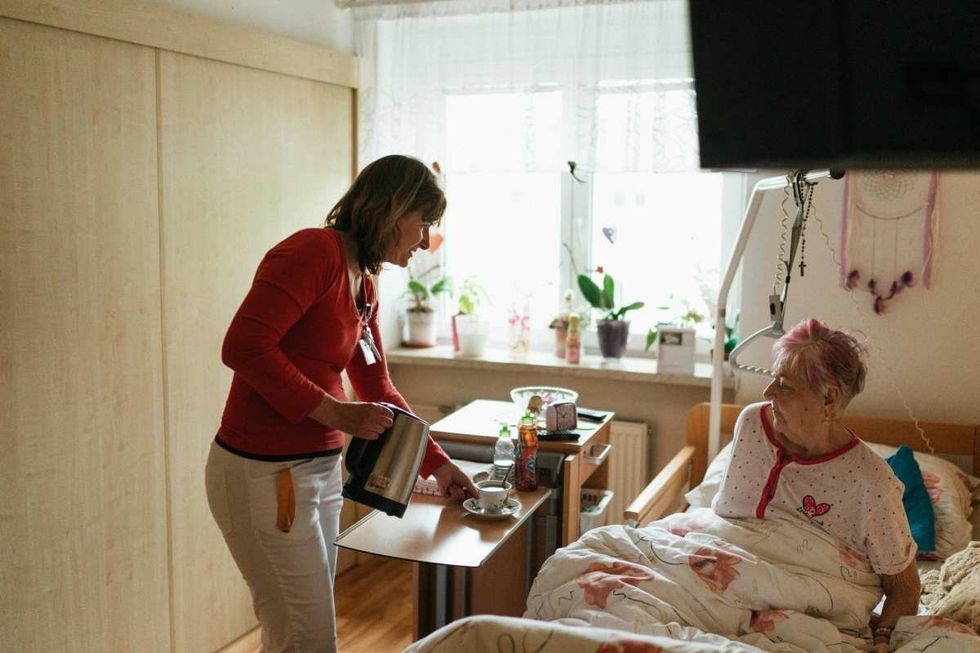Aid work isn’t known for making people rich. In addition to a low five-figure annual salary, the sector requires a graduate degree for many positions. While it might sound glamorous to live abroad, the reality is often different, and can include living in a tent for months at a time or being sequestered on a compound. But these rough conditions can translate to big savings.
Thanks to salary-boosting mechanisms and tax advantages, some American humanitarian workers are able to walk away from months abroad with tens of thousands in savings, allowing them to transition into new jobs or take time off between stressful postings.
Salary numbers in the aid world are hard to get a handle on. The United States Department of Labor doesn't qualify between types of community workers and whether they are working abroad or in the United States, but the mean annual salary for people working in community and social service occupations is $46,160. However, some American aid workers report earning up to double their base salaries when working abroad.
Right off the bat, American aid workers have a huge advantage when living outside of the country: They don’t pay tax on earnings up to $100,000. The exemption depends on the number of days spent outside the country during the past tax year, so it isn’t always applicable, but for those who can use it, it translates into big savings.
The tax savings is huge, says John, an American humanitarian worker who has spent seven years in the sector, including six years abroad. During that time, he paid only social security tax. Although the 36-year-old never earned more than $60,000 a year, he moved back to the United States with around $80,000 in savings, most of which he saved in his last three years of working abroad.
John’s first posting was for 18 months in South Sudan at age 29. Stationed in the so-called “bush,” or rural area, he admits there were very few opportunities to spend his money, save for beer. At the time, he made $36,000 a year and, after his posting, he was able to take four months off to find his next job.
“(The money) gives you a buffer and gives you time to make decisions,” says John, who requested that we not use his real name, as he is still involved in the industry. “Every aid worker, wherever they are at, they are going to need to take a rest. Burnout is an extremely real thing.”
Living in a remote border town, the work was very difficult and demanding. He was sleeping in a tent and losing weight after eating the same food day in and day out. When it came to his paid leave—known as rest and relaxation, or R & R—he didn’t want to pinch his pennies.
While in the field, many humanitarian workers receive so-called hardship and/or danger pay in addition to their base salary. Most international non-governmental organizations (NGOs) keep stats on countries, ranking them in terms of danger and hardship, which constantly changes based on world events.
“They’re different benefits, meant to accomplish different things. One is an adjustment based on an estimate of the cost of quality of life in a particular place, the other reduces an employer’s legal liability,” explains J., who wishes to remain anonymous, in an email. An American, J. has worked in humanitarian aid for over 25 years, sharing his experiences on his blog, AidSpeak, and in books.
“In a disaster, like (the recent Haiti hurricane response) you are probably not getting danger (pay),” explains Olivia, a 34-year-old American who worked as a humanitarian aid worker for four years. She estimates that with both hardship and danger pay, a person could conceivably double their salary.
While in Washington, D.C., and working at her company’s headquarters, Olivia saved very little money, as most of her salary went toward rent and other living expenses. After ten months in Yemen, she saved $50,000. Although she was technically on the same salary, she reports earning nearly double thanks to hardship and danger pay.
Olivia did not choose her posting in Yemen for the bonus danger and hardship pay, but she says that some of her colleagues with student loans choose to stay in the field longer, with the hopes of paying back their debt.
“Once I realized how much the pay racked up into your savings, it was a pretty strong incentive to stay a little longer,” says Olivia, who asked to be identified under a pseudonym, as she is still working in the industry.
Other boosts to base pay include per diem stipends to cover food and housing allowances. Although J. has never received danger or hardship pay, he has been able to save more money in the field than if he were in the United States.
“After three years, I moved back home with a nest egg that was about 10 percent more than I would have saved normally during the same period,” said J. “So, yes, some increase for sure, but not enough to put me into another tax bracket.”
However, experts say that these bonus measures are integral for aid workers, as their career trajectories are different than the average office worker.
“To be sure, (humanitarians) work in very challenging environments, doing some of the most difficult work,” says Matt Bloom, Ph.D, in an email. Bloom leads a large-scale research project at the University of Notre Dame on the well-being of aid workers, looking at several thousand workers around the globe. “They postpone or even give up a lot to do this work—careers, marriage, family—not to mention any semblance of what most people in the U.S. would consider a normal life.”
Bloom continues, “Instead of starting a career, an aid worker might work in the field for several years after college. When that worker returns to the U.S., he or she is well behind the cohort of people who graduated at the same time, in terms of career progression, income, retirement savings. The relatively small amount of hardship pay or housing allowance can help them move forward in life”
Olivia admits that she wouldn’t have been able to save as much money in a country like Jordan, where there are plenty of bars, restaurants, and other ways to spend money on weekends.
“If you really, actually want to save money, you have to be willing to jump into a much higher intensity job,” she says.
Stephanie Sarta, an Australian field logistician for a medical humanitarian aid organization, says a lot of aid workers have difficulty living in compounds. In addition to having to live in close quarters with colleagues, if an area is considered dangerous, humanitarians can be restricted to their compounds for long stretches of time.
“Even if there is a lot of financial incentive, I don't think a lot of people would do it because it takes a lot of resilience,” she says.
Sarta, 30, recently spent three months in Nigeria on a compound. Recalling the R & R, which occurred halfway through her posting, she says, “If they did not have the budget for me to go away after six weeks, I wouldn’t have left, I would’ve said no. It is completely necessary.”
Danger pay “didn’t feel like a luxury,” says Rosalie Hughes, 31, a former American humanitarian worker who spent five years in the field, in countries like Nepal, Rwanda and Tunisia. While stationed in remote or hazardous places, she used her extra pay to compensate for the lack of services and mental health in the field. Hughes says, “I wasn't using that extra money to go on beach vacations.”
After a particularly taxing time in Tunisia with the United Nations refugee agency, Hughes took time off from humanitarian work. Now a journalist, Hughes wrote an op-ed in 2013 for The New York Times about her experiences with inadequate mental health care in the field, especially in situations fraught with danger. She asserts that danger pay was essential, saying, “things became really hard for me.”
“Just because we are aid workers, why don’t we deserve to get money for our mental health?” agrees Sarta. “If you are looking at project efficiency, self-care is important.”
And for many aid workers, the extra money from working in grueling conditions in the field goes to mental health or trying to transition to another career domestically.
Living in the United States now, John hopes to write a TV show based on his experiences abroad. He says the “money buys me enough time to focus on the writing and see how all this works.” Essentially, it allows workers to acclimate back into their original homes and figure out what their lives looks like when they aren’t working on compounds abroad.
















 Take home pay is becoming less and less as expenses rise year after year.Photo credit: Canva
Take home pay is becoming less and less as expenses rise year after year.Photo credit: Canva Making bill payments gets harder each year.Photo credit: Canva
Making bill payments gets harder each year.Photo credit: Canva




 Representative Image Source: Pexels | Olly
Representative Image Source: Pexels | Olly Representative Image Source: Pexels | Pixabay
Representative Image Source: Pexels | Pixabay Representative Image Source: Pexels | Cottonbro
Representative Image Source: Pexels | Cottonbro Representative Image Source: Pexels | Cottonbro
Representative Image Source: Pexels | Cottonbro Representative Image Source: Pexels | Karolina Grabowska
Representative Image Source: Pexels | Karolina Grabowska Representative Image Source: Pexels | Jonathan Borba
Representative Image Source: Pexels | Jonathan Borba Image Source: Reddit |
Image Source: Reddit |  Image Source: Reddit |
Image Source: Reddit |  Image Source: Reddit |
Image Source: Reddit | 
 Representative Image Source: Pexels | Pixabay
Representative Image Source: Pexels | Pixabay Representative Image Source: Pexels | Pixabay
Representative Image Source: Pexels | Pixabay Representative Image Source: Pexels | markus winkler
Representative Image Source: Pexels | markus winkler
 Representative Image Source: Pexels | Shvets Production
Representative Image Source: Pexels | Shvets Production Representative Image Source: Pexels | Oleksandr P
Representative Image Source: Pexels | Oleksandr P Representative Image Source: Pexels | Photo by Spencer Selover
Representative Image Source: Pexels | Photo by Spencer Selover Representative Image Source: Pexels | JSME Mila
Representative Image Source: Pexels | JSME Mila